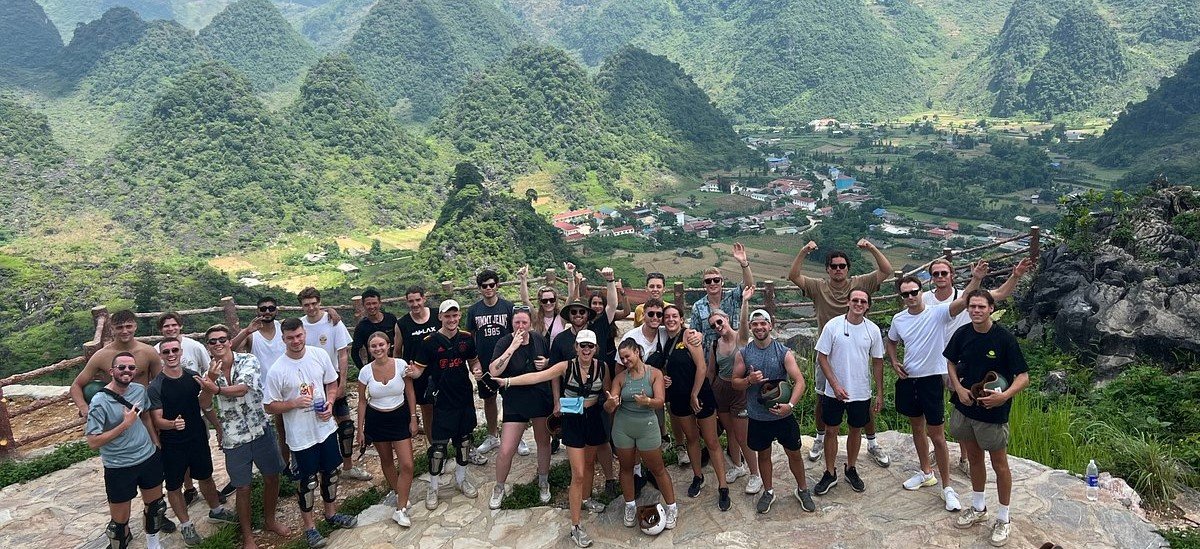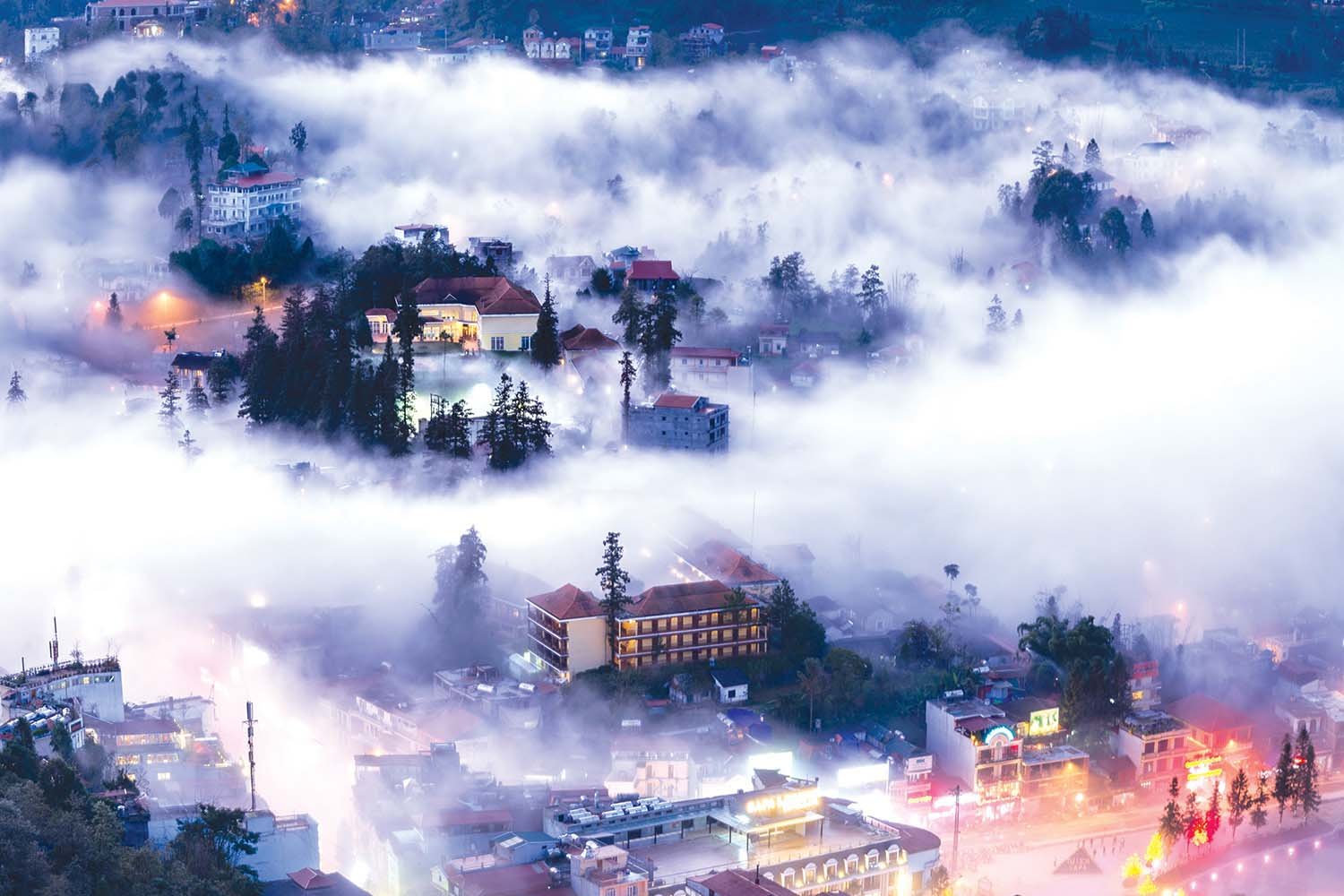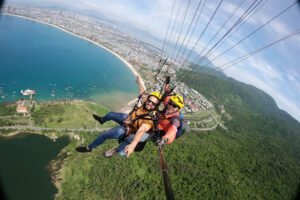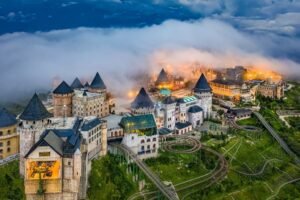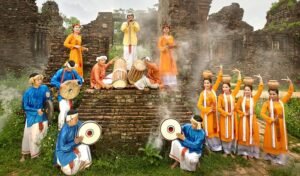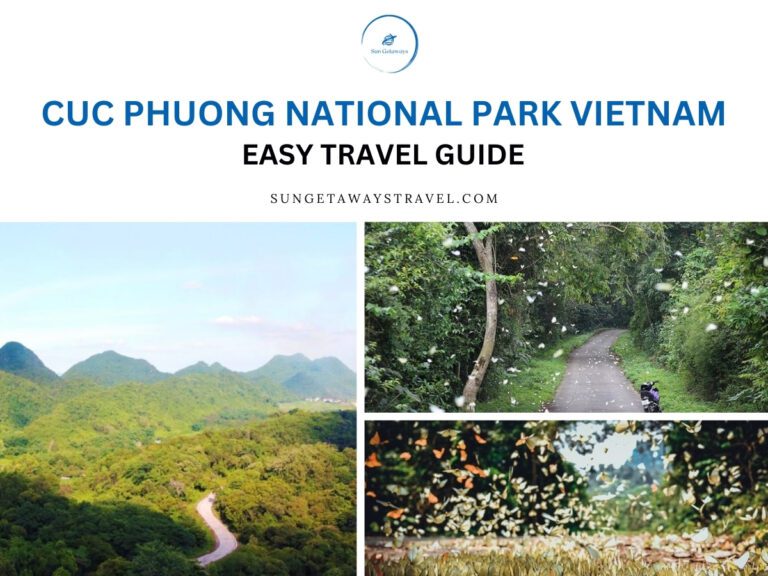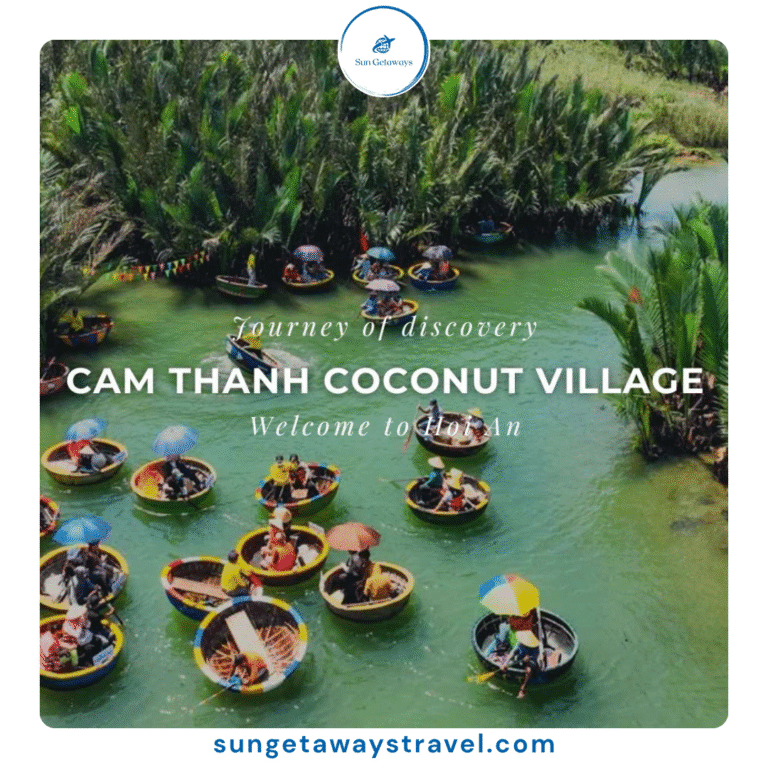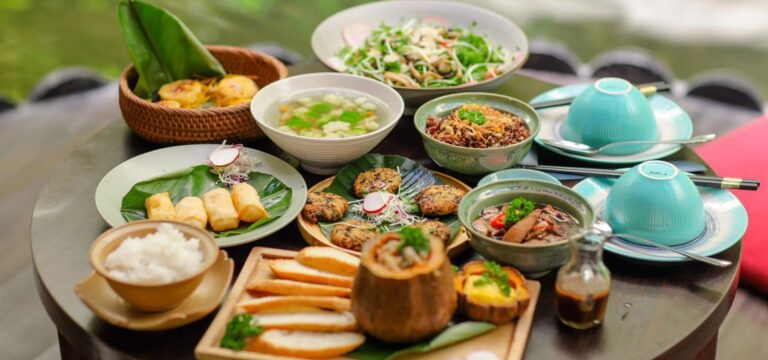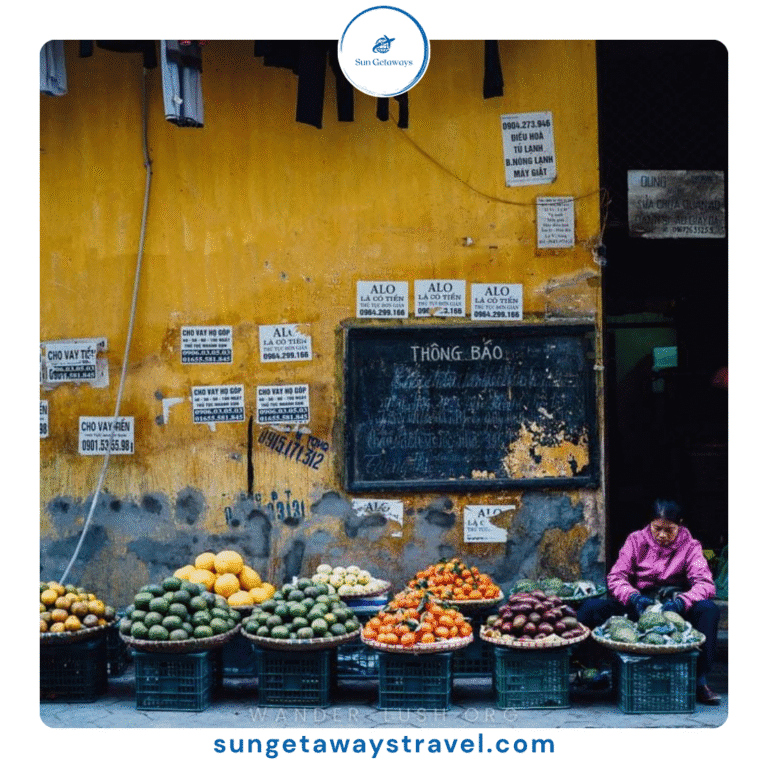Pongour Falls: The Best Time to Visit and Travel Tips
When listing breathtaking natural wonders, Pongour Falls consistently tops the list. Known as the “Great Waterfall of the South,” this majestic cascade is one of the largest Vietnam waterfalls, located just 50 kilometers from Da Lat. Its spectacular multi-tiered drops stretch nearly 100 meters wide, drawing travelers from around the globe.
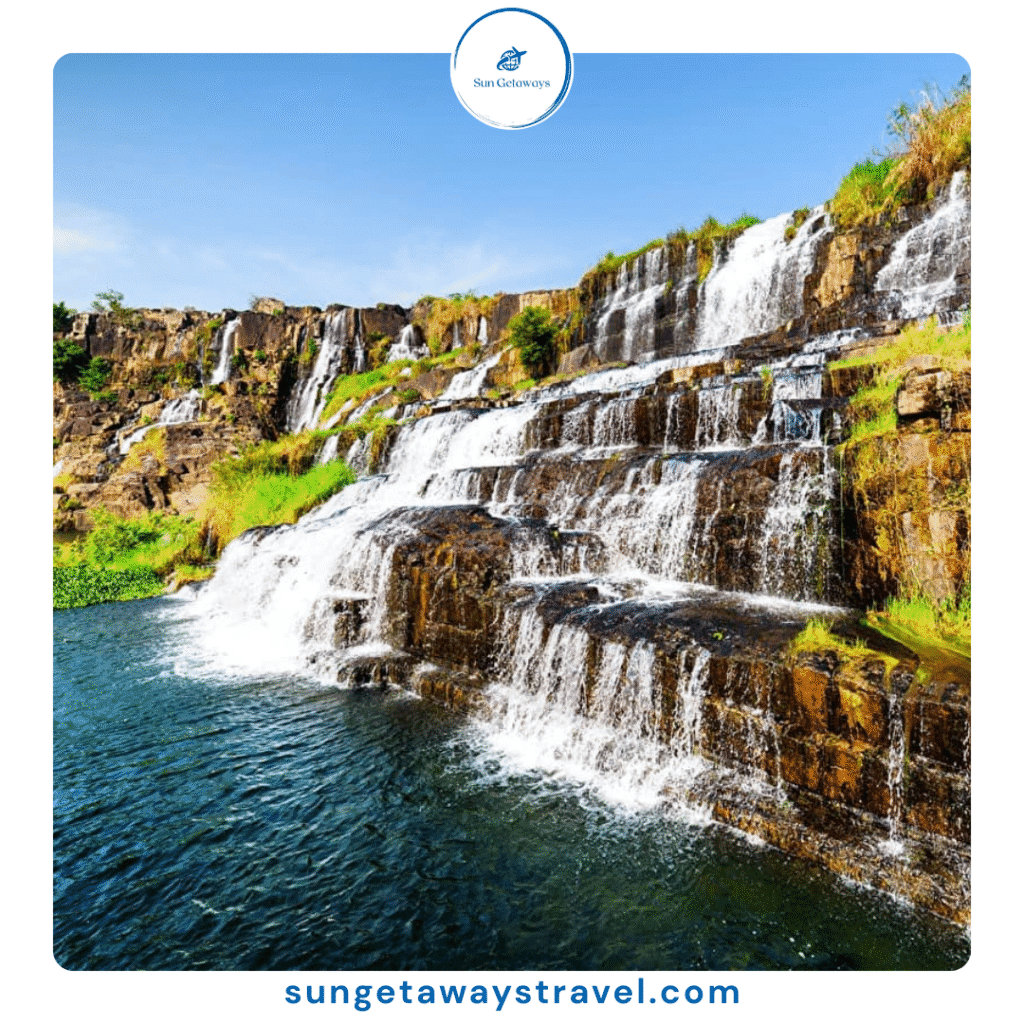

If you’re planning a Central Highlands adventure, this guide covers the best time to visit and essential travel tips for your unforgettable trip to Pongour Falls.
Why Pongour Falls Is a Must-See in Vietnam
Pongour Falls stands out among all Vietnam waterfalls not just for its size, but for the sheer spectacle it offers. Known locally as a marvel of nature, here’s why this trip should be at the top of your Vietnam itinerary:
| Feature | Description | Your Takeaway Experience |
| Majestic Scale | The water plunges 40 meters over seven distinct rock tiers, stretching nearly 100 meters wide. | You get a dramatic, panoramic backdrop perfect for photography. |
| Natural Serenity | Surrounded by a lush, tranquil forest, it provides a powerful escape from city noise and crowds. | A truly relaxing, meditative retreat into the Central Highlands’ nature. |
| Cultural Mystique | Local folklore says the falls were created by a powerful female leader and her tamed rhinos, symbolizing harmony. | You’re not just visiting a site, you’re connecting with a rich, unique Vietnamese culture and legend. |
🤔 What You Gain from a Pongour Trip:
- Epic Photo Opportunities: Capture the unique, tiered cascade that looks like a giant natural staircase.
- Refreshing Adventure: Hike the surrounding trails and feel the cool mist of the powerful water.
- Cultural Connection: Reflect on the local legends that give the falls its spiritual significance.
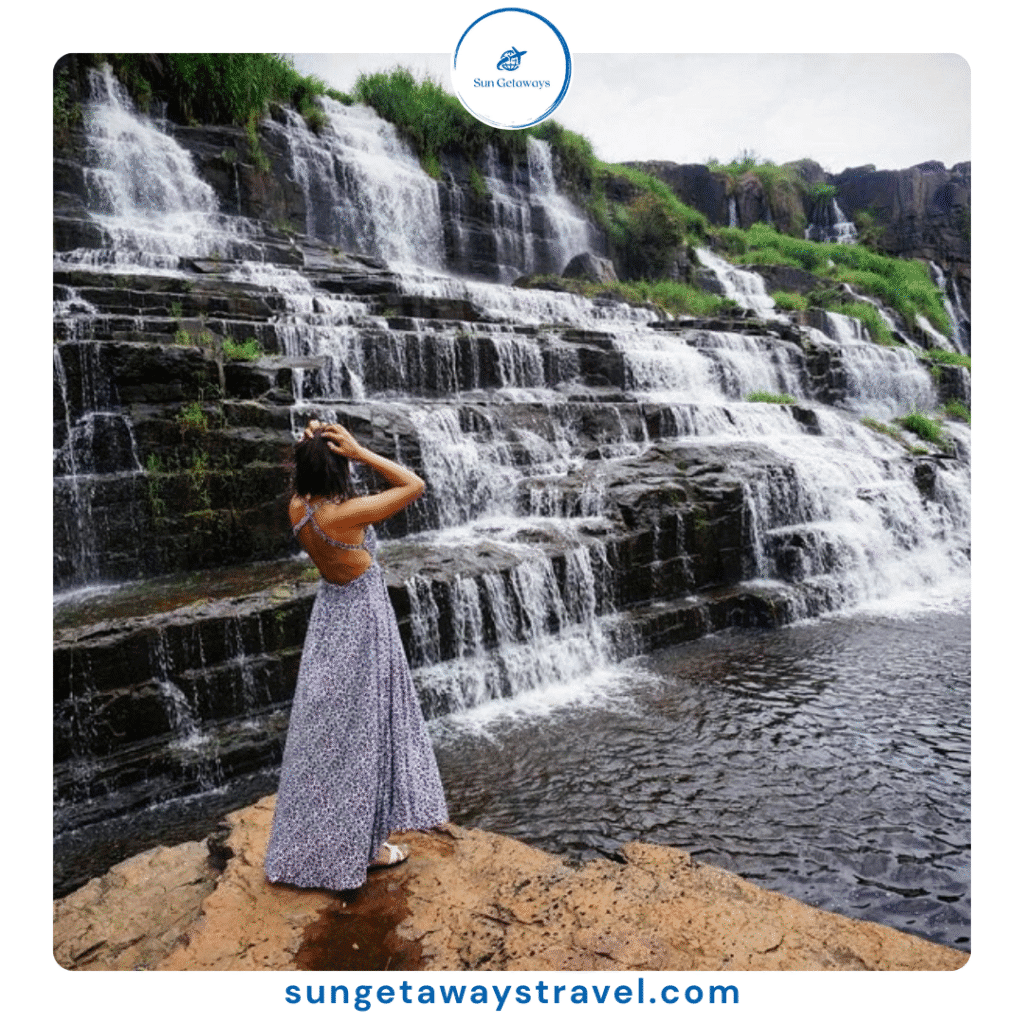

Simply put, Pongour Falls offers an unmatched blend of adrenaline and tranquility, making it the most majestic Dalat Waterfalls experience.
The Best Time to Visit Pongour Falls
Choosing the right time for your visit is essential, as the spectacle of Pongour Falls changes dramatically with the seasons. You need to decide whether you prefer raw, thundering power or a calm, photogenic retreat.
Rainy Season (May to October)
- ✅ Pro: The waterfall is at its most majestic and awe-inspiring, perfect for powerful photography.
- ❗️Caution: The trails can be slippery and muddy. Sturdy, waterproof footwear and extra caution are mandatory for safety.
During the rainy season, Pongour Falls is at its most powerful. Heavy rains feed the Da Nhim River, causing the cascades to swell and roar with energy. The sight of water thundering down the terraces is awe-inspiring, and photographers will love capturing its full might. However, the paths may be slippery, so proper footwear and caution are essential.
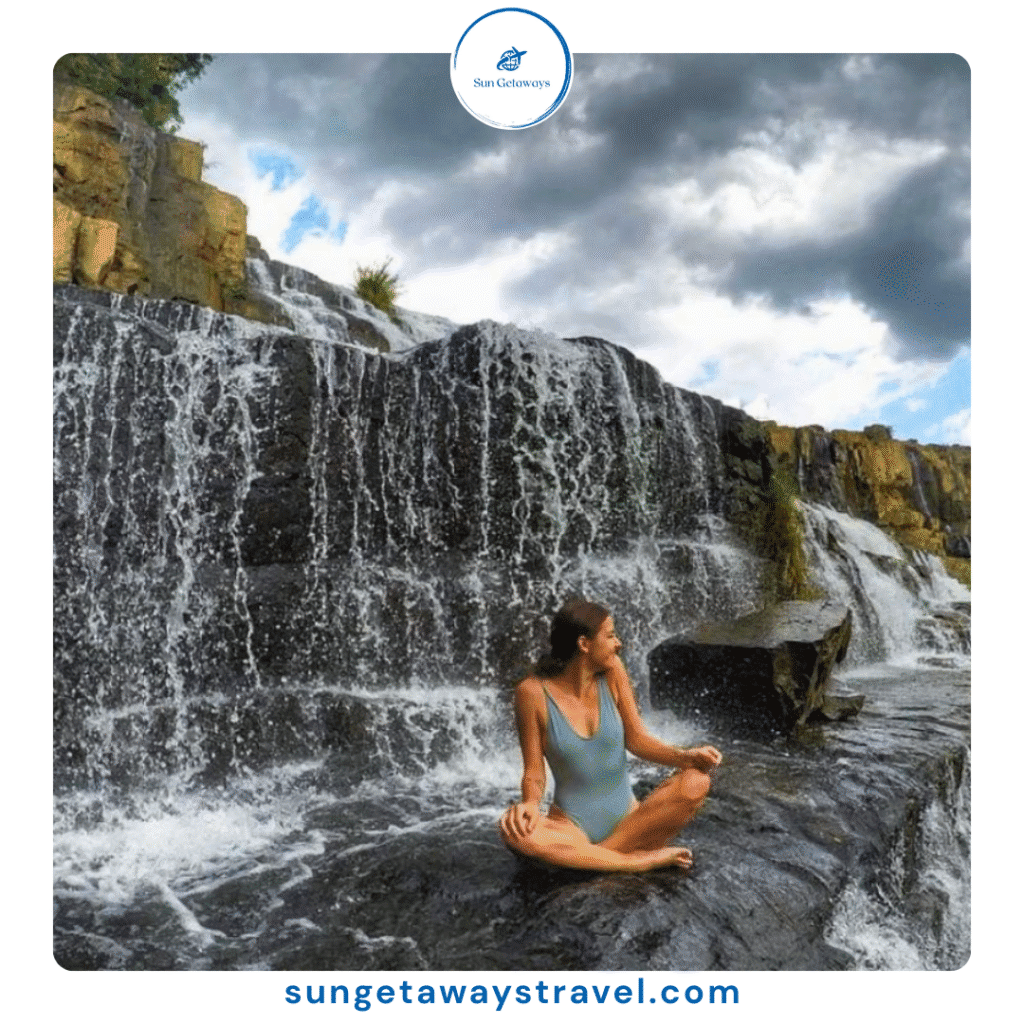

Dry Season (November to April)
- ✅ Pro: Ideal weather with clear skies, safer, dry trails, and shallow pools perfect for relaxing or picnics near the base.
- ✅ Tip: This is the best time to see the detailed rock formations and enjoy the surrounding pine forests without intense humidity.
In contrast, the dry season offers a calmer version of Pongour Falls. While the water flow is reduced, the rocks and terraces become more visible, revealing intricate patterns formed over centuries. This is also a better time for picnics, swimming in shallow pools, and enjoying the peaceful atmosphere. The dry season is generally considered the most comfortable for travel, thanks to clear skies and mild weather.
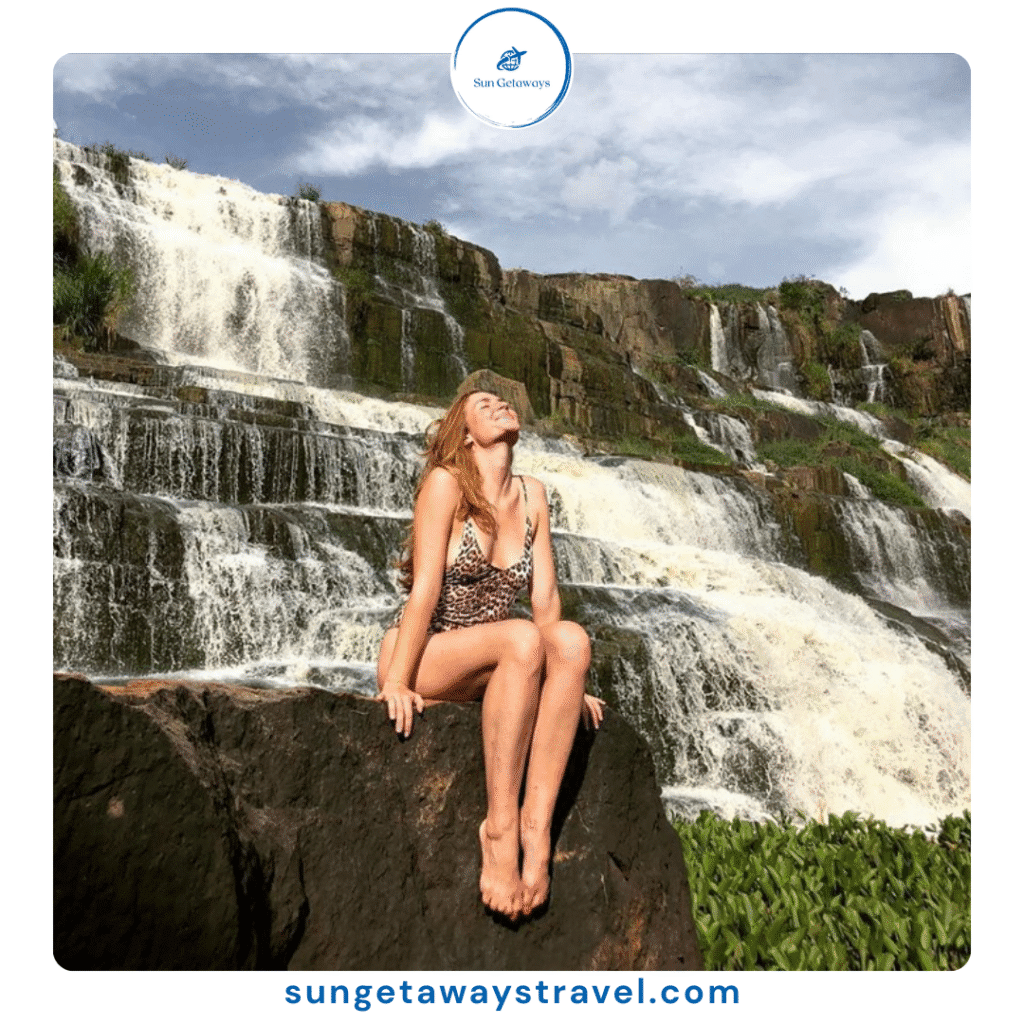

The Ideal Time to Go
For the ideal balance of beauty and comfortable travel, aim for late autumn or early winter (November to January). During this period, the falls maintain a vigorous flow from the recently ended rainy season, but the weather is mild, roads are safe, and the trails are easy to navigate.
🤔 Want to time your Dalat Waterfalls trip perfectly? Sun Getaways Travel offers expert, up-to-the-minute guidance on the best conditions to visit Pongour Falls, ensuring your adventure is both spectacular and smooth.
How to Get to Pongour Falls
Pongour Falls is located in Duc Trong District, about a 1.5-hour drive from Da Lat. Travelers can reach the falls via several options:
- By motorbike: Renting a motorbike in Da Lat is a popular choice for adventurous travelers. The ride offers scenic views of pine forests and rural landscapes.
- By car or private transfer: For comfort and convenience, especially if you’re traveling in a group or with family, a private car transfer is ideal.
- By guided tour: Joining a tour ensures a hassle-free journey with added insights from local guides.
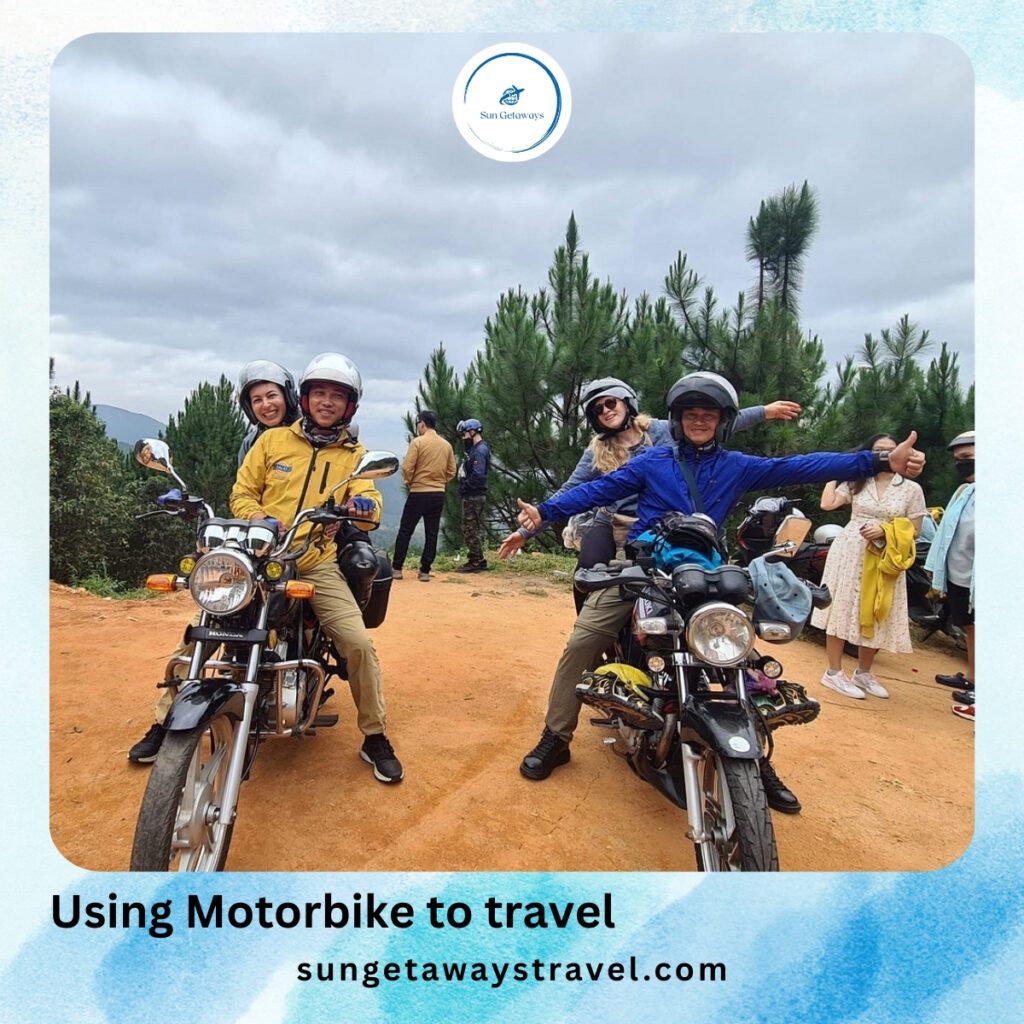

The entrance fee to Pongour Falls is affordable (around 20,000 VND per person), making it accessible for all budgets.
What to Expect at Pongour Falls
When planning your visit to Pongour Falls, prepare for an experience that blends raw natural power with tranquil beauty. After paying the entrance fee, a well-maintained, lush trail guides you directly to the main viewing area. The roar of the water quickly builds anticipation—and the sight certainly delivers.
Highlights of your Pongour Falls experience include:
- The Seven-Tier Spectacle: Unlike single-drop cascades, you will marvel at the rare, seven-level waterfall structure. This incredible tiered design is what truly sets Pongour apart as one of the most majestic Vietnam waterfalls, especially during the rainy season when the water volume is highest.
- Safe Swimming and Cooling Off: In the dry season (roughly November to April), the base of the falls forms expansive, shallow pools. This is your chance to cool off safely after the walk and relax right next to the massive cascade.
- Unique Photo Opportunities: Pongour offers endless perspectives. Capture dynamic long-exposure shots of the silky white water, or climb down to the large, flat rocks at the base for an epic group photo with the entire 100-meter span behind you.
- Local Picnic Spots: Utilize the shaded, designated areas around the falls. Many Vietnamese families bring their own food, making it a perfect spot for travelers to enjoy a pre-packed picnic while soaking in the inspirational atmosphere.
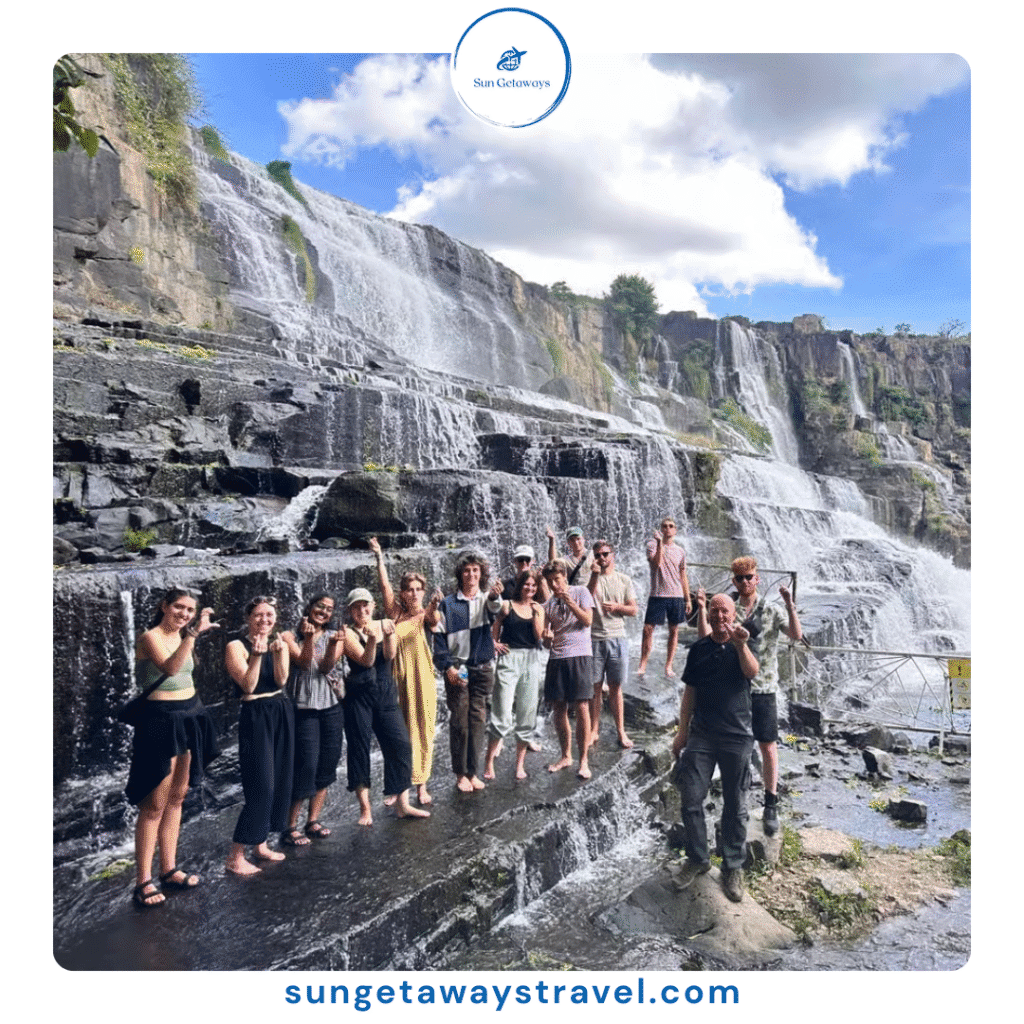

❗️ Valuable Tip: Visit during the Tết (Lunar New Year) period or a local spring festival. Historically, Pongour Falls hosts minor festivals during this time, adding cultural vibrancy to your nature experience.
Travel Tips for Visiting Pongour Falls
To ensure your trip to the “Great Waterfall of the South” is smooth, adventurous, and unforgettable, keep these essential tips for visiting Pongour Falls in mind:
- Gear Up for Safety: The path to the falls involves uneven terrain and slippery rocks, especially during the rainy season. Wear sturdy, non-slip hiking shoes or sandals—leave the fashionable flip-flops at your hotel!
- Best Time to Visit (Golden Hour): Plan to arrive early (before 10:00 AM). Not only will you beat the crowds of day-trippers, but the morning light is ideal for stunning, clear photos of the cascades.
- What to Pack: Facilities near the falls are basic. Always pack plenty of water and light snacks. Also, bring a light jacket or sweater; Da Lat’s mountain climate is cool, and you’ll appreciate the warmth in the early morning or late afternoon. For more detail, refer to our Vietnam packing guide.
- Capture the Multi-Tiered View: For the most epic photos, hike down to the base of the falls to capture the massive scale of the multi-tiered cascade. Conversely, hike up to the official viewpoint for the panoramic, wide-angle shot.
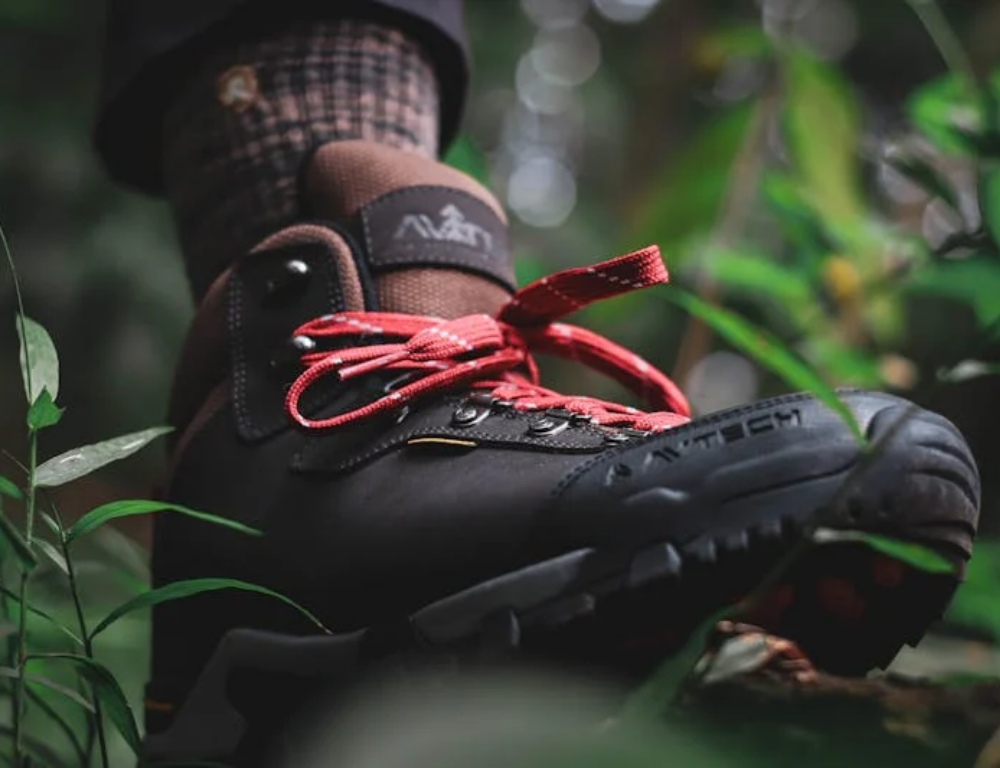

Other Attractions Near Pongour Falls
If you have more time and want to turn your visit to Pongour Falls into a full-day exploration, the surrounding Central Highlands countryside offers several valuable stops:
- Elephant Falls (Thác Voi): Located only about 30 km from Pongour, Elephant Falls offers a more rugged and adventurous experience. Its powerful, voluminous cascade requires a slightly challenging climb over rocks, rewarding visitors with a raw, untouched view of nature in Vietnam.
- Linh An Pagoda: Directly near Elephant Falls, this massive Buddhist temple is home to a towering, beautiful statue of the Goddess of Mercy (Quan Âm) and a striking gold Buddha statue. It provides a peaceful, spiritual contrast to the noisy waterfalls. For those interested in tours and packages, this spot is often included in Da Lat excursions.
- Central Highlands Coffee Plantations: The region around Da Lat and Di Linh (near Pongour) is the heart of Vietnamese coffee production. Look for local farms offering tours and tastings of famous Arabica and Robusta beans, including the unique weasel coffee (Cà Phê Chồn). This provides a great cultural insight and a chance to buy fresh, high-quality souvenirs.
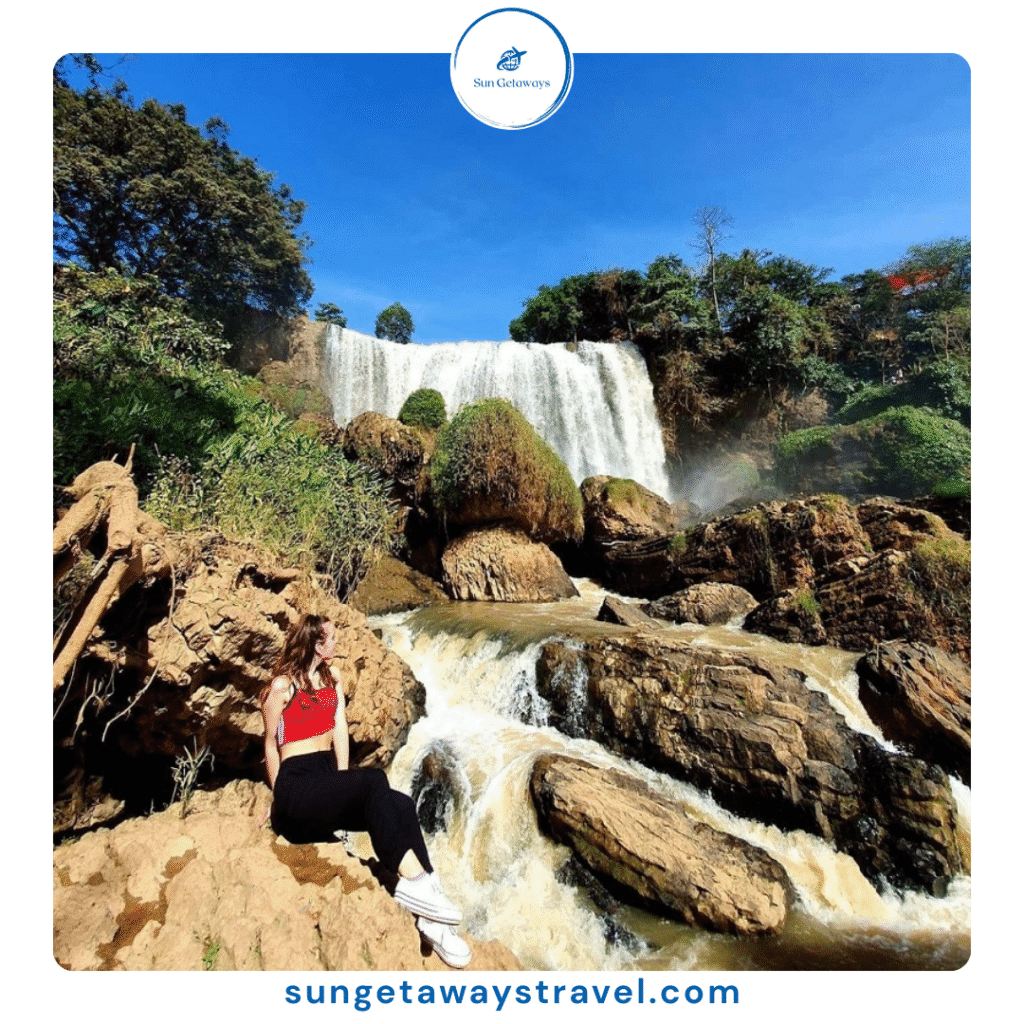

Combining these sites allows you to transition smoothly from natural majesty to spiritual serenity and local agriculture, ensuring a rich and rewarding journey through Da Lat’s beautiful countryside.
Conclusion
Pongour Falls is more than just one of the most beautiful Vietnam waterfalls—it’s a place where nature, legend, and culture come together in harmony. Whether you visit during the rainy season for its raw power or the dry season for its tranquility, Pongour promises a memorable experience.
With the right timing, travel planning, and guidance, your trip to Pongour Falls can be the highlight of your Vietnam adventure. So pack your bags, plan your route, and get ready to witness the breathtaking beauty of the Great Waterfall of the South.


👉 Looking for a stress-free way to explore Da Lat and Pongour Falls? Contact Sun Getaways Travel (WhatsApp) for customized Vietnam tours designed to highlight hidden gems like this one.
FAQs: Pongour Falls Quick Guide
1. Where exactly is Pongour Falls located?
It’s located about 50 kilometers south of Da Lat in the Central Highlands. It requires a drive of approximately 1.5 hours from the city center.
2. Is there an entrance fee to visit Pongour Falls?
Yes, there is a small entrance fee (typically around 20,000 VND – 40,000 VND) required to access the site and maintain the surrounding area.
3. What is the best time of year to see the waterfall at its fullest?
The best time is during the rainy season (May to October), as heavy rainfall makes the cascade incredibly powerful and wide. For the best weather, visit right after the rainy season (November/December).
4. How difficult is the walk to the waterfall base?
The walk is generally considered easy to moderate. There is a maintained path with some steps, but the final section can be slippery. Wear appropriate footwear.
5. Can I swim at Pongour Falls?
Swimming is generally not recommended and is often prohibited due to strong currents and submerged rocks, especially during the peak rainy season. Always observe local safety signs.
Ask a question
Leave a Comment (0)
No questions yet. Be the first to ask a question!


